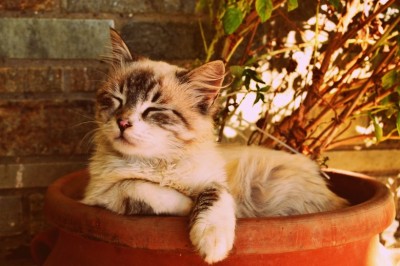Cat Behavior and Cat Hunting Tendencies
Imagine some sophisticated hunting machine and individuals will surely think of their beloved cats. Cats are natural hunters and they possess all the physical tools, and proficiencies, required to chase the prey. They have adequate speed, athleticism, flexibility, and killer instinct, which are essential characteristics of a sharp hunter. However, cats are not born hunters, who kill for food. Instead, tracing, killing and hunting are learned behaviors. Possibility of hunger cannot drive or teach a feline to kill the prey. A feline may be a skilled mouse hunter and yet may never eat a mouse or wish to eat it anytime. They consider rat killing as a play. Many domestic cats also are good rodent and bird hunters. However, they may not hunt them daily. If foods served by the pet owners are not adequate, cats hunt rodents or birds to gratify themselves. Hunting Lessons: Kittens develop the basic skills of chasing the prey right from their birth. They learn the skill of coordinating, chasing, and timing while playing. They become skilled in adjusting their speed with the speed of prey. They pounce on the prey by guessing the distance. Thus, playing enables the cats and kitten to learn and make judgments through experience. As the kitten grows up, mother feline teaches the young cats to kill for eating. The first lesson involves bringing the dead prey at home and eating it in front of the young cats. Soon, they too join her. At the end of first lesson, mother cat brings the dead prey and places it in front of the kittens, so that they can eat it themselves. However, most people who have cat in their house often see that female cat brings the prey and drops it in front or at the feet of the cat owners child. This is particularly seen in spayed female cats, because by this way she tries to teach the lessons to human child, which otherwise she might have done for her own kittens. The second lesson in hunting is bringing the dead prey partly in house. The female cat then finishes off the prey in front of her kittens. Later, she allows kittens to practice these skills and teach them to kill the wounded or slow prey. Gradually, cats bring more kills at home until kittens become expert in these skills. Finally, kittens accompany the mother cats. They hunt, and slay the preys themselves. Tendencies: Cats are efficient hunters, but pet owners may have noticed that, their cats often torture their prey before slaying it. Some say it is because of lack of self-confidence in them. Cats are anxious that their preys are not dead completely and may fight back or bite them at any moment. Domestic cats often get desired food to eat and their natural behavior to hunt is usually decreased considerably. As a result, cats play hunting by wiggling the toes, ears, and fingers of the humans. Thus, house cats chase the imaginary prey and they run up, down across the house, drapes, and tables and wrack things in this process. Go to Cat and Kitten Zone to get your free ebook about Cats and Kittens at Cats. Cat and Kitten Zone also has information on Kittens, Cat Supplies and a Cat and Kitten Forum where you can connect with others who love cats and kittens. You can Find Cat and Kitten Zone at www.catandkittenzone.com.






















